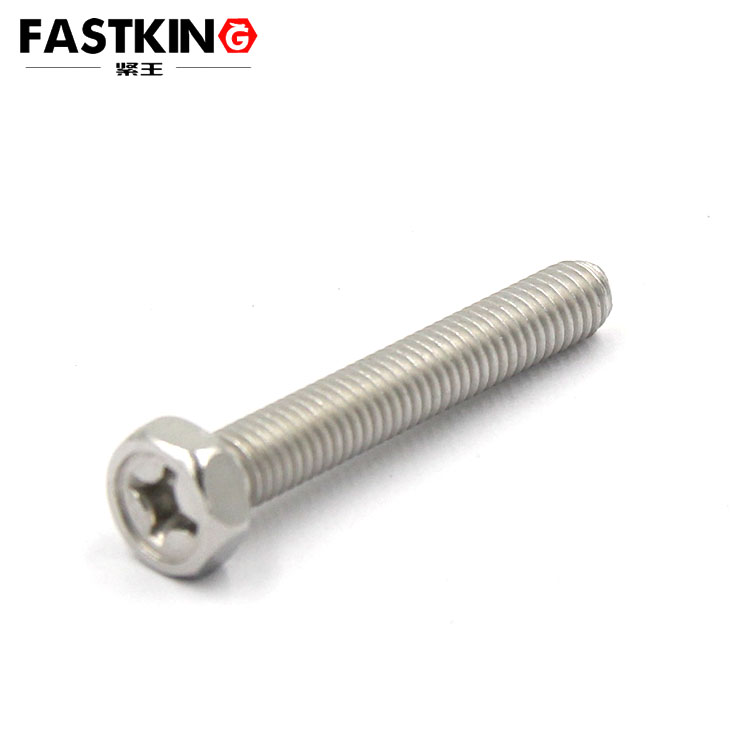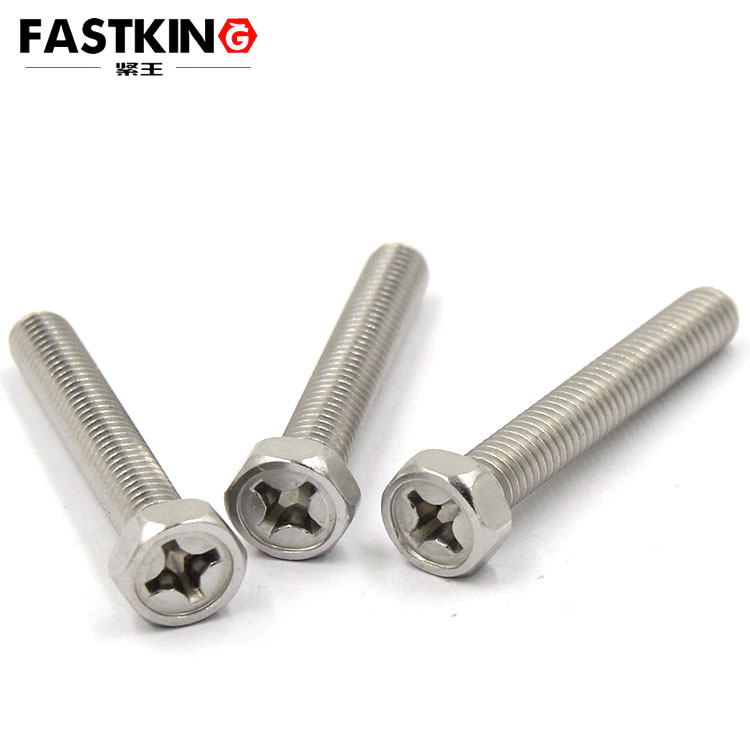I. Definition and Features of GB/T 29.2 Hexagon Head Bolts
The GB/T 29.2 standard specifies hexagon head bolts with a cross recess on the head, designed for applications requiring both high torque and flexible installation. Key features of these bolts include:

Dual-Function Design: The combination of a hexagon head and a cross recess allows for tightening with either a hex wrench or a Phillips screwdriver, providing versatility in tool selection.
High Torque Capacity: The hexagon head design enables the bolts to withstand high torque, ensuring stability in demanding applications.
Automation Compatibility: The cross recess is particularly useful for automated assembly lines, where screwdrivers can easily engage and drive the bolt.
Material and Performance: Typically made from high-strength steel with a performance rating of 5.8, these bolts are often surface-treated with zinc plating to enhance corrosion resistance.
II. Application Scenarios
Mechanical Manufacturing
GB/T 29.2 bolts are widely used in the assembly of machinery such as machine tools, engines, and reducers. Their high strength and dual-function design ensure reliable connections in high-load environments. For example, in the connection between engine blocks and cylinder heads, these bolts provide a secure and stable fastening solution.
Automotive Industry
In automotive manufacturing, these bolts are commonly used for connecting chassis components, suspension systems, and engine parts. Their ability to handle high torque and resist loosening makes them ideal for critical applications such as connecting suspension arms to vehicle frames.
Construction and Steel Structures
In construction and steel structure projects, GB/T 29.2 bolts are used for connecting steel beams and columns, installing curtain walls, and securing large equipment foundations. Their high strength and precision ensure structural stability, while the dual-function head design offers flexibility in installation.

Electronics and Appliances
Due to their versatility and ease of installation, GB/T 29.2 bolts are also used in the assembly of electronic devices and household appliances. The cross recess design allows for quick and efficient installation and disassembly, which is beneficial for both manufacturing and maintenance.
III. Usage Methods
Tool Selection
Choose the appropriate tool based on the bolt size and application requirements. For high-torque applications, a hex wrench or socket wrench is recommended. For quick installation, especially in automated processes, a Phillips screwdriver or power tool can be used.
Assembly Steps
Cleaning and Inspection: Clean the threads of the bolt and the connected parts to remove oil, rust, and debris. Inspect the bolt for any damage or deformation.
Pre-assembly: Insert the bolt into the threaded hole of the connected part, ensuring a snug fit.
Tightening the Bolt: Use the appropriate tool to tighten the bolt according to the specified torque value. For multiple-bolt connections, a symmetrical or crisscross tightening sequence is recommended to ensure even load distribution.
Inspection and Confirmation: After tightening, check that the bolt is properly secured and that there is no looseness between the connected parts.
Precautions
Torque Control: Follow the specified torque values to avoid connection failure due to over-tightening or under-tightening.
Anti-loosening Measures: In environments with significant vibration, consider using spring washers or double nuts to prevent loosening.
Material Matching: Select bolt material based on the material of the connected parts to prevent galvanic corrosion.

IV. Summary
GB/T 29.2 hexagon head bolts with a cross recess offer a versatile and reliable fastening solution suitable for a wide range of applications, including mechanical manufacturing, automotive, construction, and electronics. Their dual-function design, high torque capacity, and compatibility with automated assembly processes make them an ideal choice for modern industrial needs. Proper selection and use of these bolts can significantly enhance assembly efficiency and ensure the stability and reliability of connected structures.
